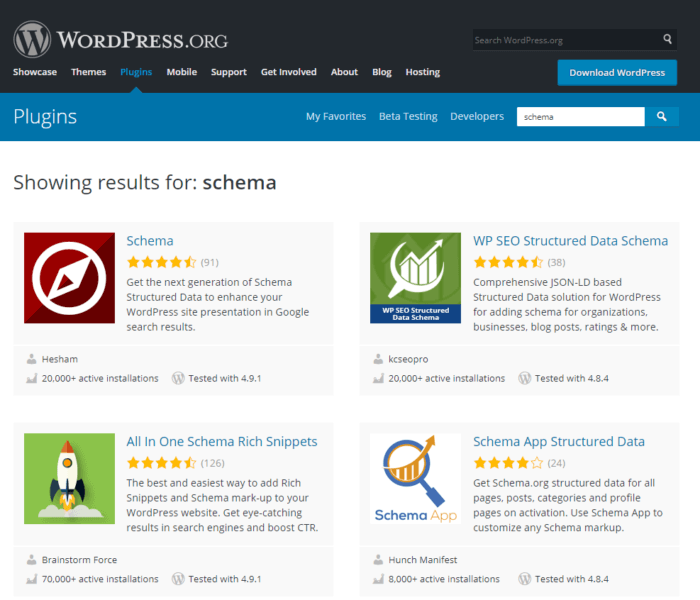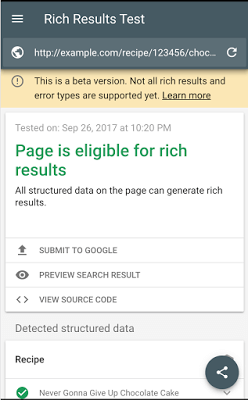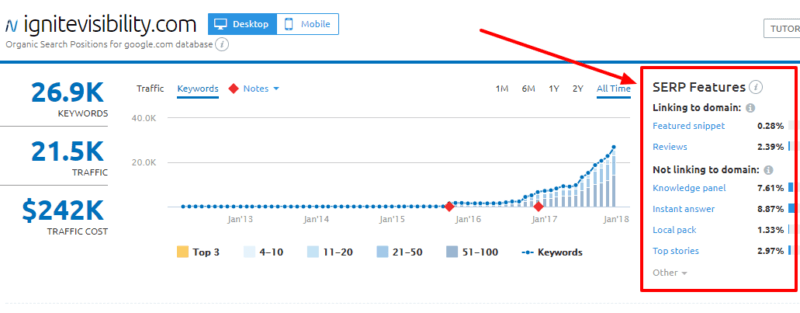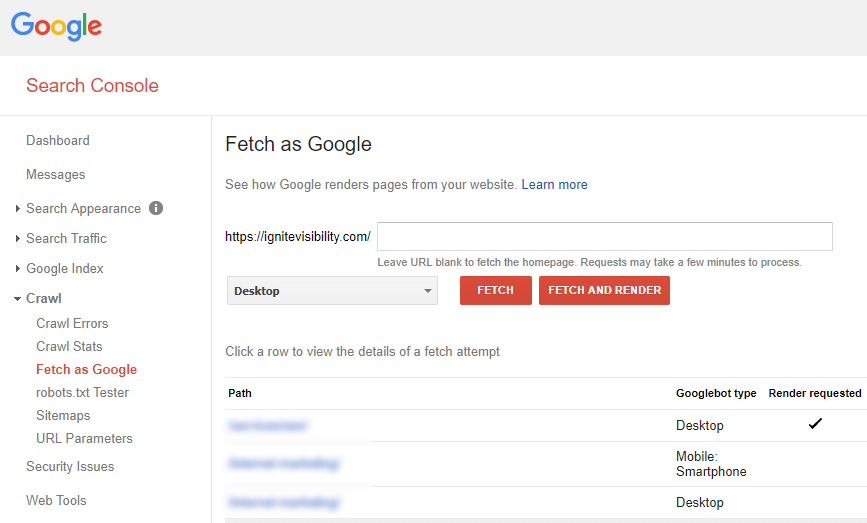Columnist John Lincoln provides a lesson in rich results 101 for those who are just getting started with them.

As of December 19, 2017, “rich results” is the new name for all of Google’s special search result features and enhancements, including rich snippets, rich cards and enriched results.
As a marketer, those terms probably aren’t new to you. They’re intended to make search results stand out by incorporating additional information in the form of pictures, review stars and so forth.
Below, I’ll cover everything you need to know about rich results going into 2018.
1. Structured data is generally used to obtain rich results
Structured data is coded within your page markup and is used to provide information about a page and its content. In addition to helping Google better understand your page content, structured data is also used to enable rich results.
Although not all structured data leads to a rich result, marking up content with schema.org structured data (commonly called “schema markup”) can certainly improve your chances of obtaining a rich result in SERPs. Certain kinds of schema markup, such as reviews and recipes, have the ability to produce a rich result when properly implemented.
Thankfully, implementation is an easy process. If you’re running a WordPress site, you can simply install a variety of plugins to add the necessary markup.

If not, there are plenty of tools available to help create and test schema markup, including Structured Data Markup Helper, Schema Generator for SEO or Structured Data Testing Tool.
2. Google prefers the JSON-LD format for structured data
Google supports structured data in three formats: JSON-LD, Microdata and RDFa. Its recommended format, however, is JSON-LD.
JSON-LD stands for “JavaScript Object Notation – Linked Data,” and, as you may have guessed, is presented in a JavaScript format.
Essentially, it describes the information on your page without disturbing what users see. So, rather than attempt to simultaneously show something to users while explaining it to Google (which can get a bit messy), JSON-LD separates the information into its own section.
3. There’s no way to guarantee rich results
As mentioned above, applying structured data markup to your pages is a great first step to obtaining rich results — but Google may still decide not to show them for your site. Reasons for this vary, but Google provides the following explanations for a rich results absence in its Structured Data General Guidelines:
- Using structured data enables a feature to be present, it does not guarantee that it will be present. The Google algorithm tailors search results to create what it thinks is the best search experience for a user, depending on many variables, including search history, location, and device type. In some cases, it may determine that one feature is more appropriate than another, or even that a plain blue link is best.
- The structured data is not representative of the main content of the page or is potentially misleading.
- The structured data is incorrect in a way that the testing tool was not able to catch.
- The content referred to by the structured data is hidden from the user.
- The page does not meet the guidelines for structured data described here, the type-specific guidelines, or the general webmaster guidelines.
4. The markup may not affect your rank in the SERPs
Furthermore, including rich results in your listing to improve its position in the SERPs is not yet a reality.
Although Google has suggested that it might one day take structured data into consideration as a ranking factor, we have not yet reached that day. Indeed, various studies have suggested (and Google has confirmed) that there is no ranking boost from structured data.
That being said, there is a case to be made that certain rich results increase your click-through rate (CTR) and thus result in more traffic.
5. Google has a new rich results testing tool
With the announcement of its new “rich results” terminology, Google also unveiled a new testing tool specifically for rich results.

Rich Results Testing Tool
The tool is an updated version of Google’s previous structured data testing tool and is designed to make testing and diagnosing your page’s structured data easier.
Google had this to say on its Webmaster blog:
The new tool provides a more accurate reflection of the page’s appearance on Search and includes improved handling for Structured Data found on dynamically loaded content. The tests for Recipes, Jobs, Movies, and Courses are currently supported — but this is just a first step, we plan on expanding over time.
Note that the tool is still in beta (as of the time of this writing) and currently only supports the rich result types listed above. It does not currently show schema.org syntax errors.
6. You can check your rich results using other tools, too
Of course, there are options outside of Google when it comes to testing your rich results.
And because it’s only natural that you would want to know what snippets and information Google is featuring about your business in its SERPs, many sites are offering ways to uncover your featured snippets.
One of my favorites is SEMrush. Using its domain search, you can track when and which snippets were used.

7. It can take several weeks for your rich results to appear
Whether or not your data displays as rich results at all is entirely up to Google. And before it appears, Google has to crawl and index your site after the markup is applied. You can check the status in Google Search Console.
Then it’s a waiting game, and it can often take two or more weeks for your rich results to appear in SERPs (if they do at all).
On the other hand, Google’s John Mueller did note in a Google+ Hangout that after the pages have been recrawled and reindexed, there should be no additional delay in updating the search results.
Pro Tip: Use Fetch as Googlebot (within Google Search Console) to get your structured data markup indexed faster. I’ve gotten rich results in a matter of hours, or less in some cases.

8. Google can disable your rich results
Unfortunately, spamming isn’t just limited to content and links — there are webmasters who try to game the system with deceptive structured data markup as well. If Google sees any spammy structured data, it could disable your rich results, and even give your site a manual penalty.
Make sure you’re delivering your data in an acceptable way by adhering to Google’s structured data general guidelines.
9. Technically, structured data isn’t required to show rich results
The terms “rich results” and “structured data” often go hand-in-hand. But as it turns out, you don’t necessarily need the structured data markup to get the result.
Google’s John Mueller recently confirmed that structured data isn’t strictly necessary for Google to apply rich snippets to your search results. Occasionally, Google is able to glean the data necessary to produce rich results from your content alone.
That being said, it’s generally recommended to apply structured data markup to your content if you want rich results to show, as rich results appearing without markup is rare.
10. The ‘site: command’ query should show if the results have been implemented correctly
If rich results aren’t showing up, it’s often to due to a quality or technical issue in implementation.
Rather than relying on Google’s new rich results testing tool, you can do a site: command on a site which has implemented structured data markup. If rich results appear for the site, that means your technical setup is correct.
If the rich results don’t show for regular search queries but do in site: command, you’ll know that the reason may be a quality issue, not a technical one.
Conclusion
Rich results can be invaluable in their ability to show searchers meaningful results and immediately answer relevant questions.
The tips above will help make sure every marketer uses them correctly, giving you the best shot at having them show in search results.
[Article on Search Engine Land.]
Opinions expressed in this article are those of the guest author and not necessarily Marketing Land. Staff authors are listed here.
Marketing Land – Internet Marketing News, Strategies & Tips
(47)




